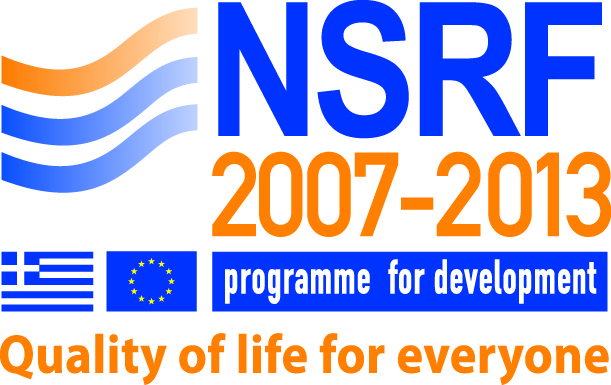Please use this identifier to cite or link to this item:
https://olympias.lib.uoi.gr/jspui/handle/123456789/18336Full metadata record
| DC Field | Value | Language |
|---|---|---|
| dc.contributor.author | Katopodis, K. P. | en |
| dc.contributor.author | Andrikos, E. | en |
| dc.contributor.author | Gouva, C. D. | en |
| dc.contributor.author | Bairaktari, E. T. | en |
| dc.contributor.author | Nikolopoulos, P. M. | en |
| dc.contributor.author | Takouli, L. K. | en |
| dc.contributor.author | Tzallas, C. S. | en |
| dc.contributor.author | Elisaf, M. S. | en |
| dc.contributor.author | Pappas, M. V. | en |
| dc.contributor.author | Siamopoulos, K. C. | en |
| dc.date.accessioned | 2015-11-24T18:51:58Z | - |
| dc.date.available | 2015-11-24T18:51:58Z | - |
| dc.identifier.issn | 0896-8608 | - |
| dc.identifier.uri | https://olympias.lib.uoi.gr/jspui/handle/123456789/18336 | - |
| dc.rights | Default Licence | - |
| dc.subject | Adult | en |
| dc.subject | Aged | en |
| dc.subject | Aluminum Hydroxide/adverse effects/*therapeutic use | en |
| dc.subject | Cross-Over Studies | en |
| dc.subject | Female | en |
| dc.subject | Humans | en |
| dc.subject | Kidney Diseases/classification/therapy | en |
| dc.subject | Lipids/*blood | en |
| dc.subject | Male | en |
| dc.subject | Middle Aged | en |
| dc.subject | Peritoneal Dialysis, Continuous Ambulatory/*methods | en |
| dc.subject | Phosphates/*blood | en |
| dc.subject | Polyamines/adverse effects/*therapeutic use | en |
| dc.title | Sevelamer hydrochloride versus aluminum hydroxide: effect on serum phosphorus and lipids in CAPD patients | en |
| heal.type | journalArticle | - |
| heal.type.en | Journal article | en |
| heal.type.el | Άρθρο Περιοδικού | el |
| heal.identifier.secondary | http://www.ncbi.nlm.nih.gov/pubmed/16722024 | - |
| heal.language | en | - |
| heal.access | campus | - |
| heal.recordProvider | Πανεπιστήμιο Ιωαννίνων. Σχολή Επιστημών Υγείας. Τμήμα Ιατρικής | el |
| heal.publicationDate | 2006 | - |
| heal.abstract | BACKGROUND: Dietary phosphorus restriction, oral administration of phosphorus binders, and dialysis are the main strategies to control hyperphosphatemia in patients with stage 5 chronic kidney disease. Aluminum hydroxide (AH) and calcium carbonate, the most commonly used phosphorus binders, have serious disadvantages, such as aluminum toxicity and hypercalcemia. Sevelamer hydrochloride (SH) is a relatively new nonabsorbed calcium- and aluminum-free phosphorus binder. The present study was designed to evaluate the efficacy of SH in the control of hyperphosphatemia and its effect, compared to AH, on serum lipid parameters in patients on continuous ambulatory peritoneal dialysis (CAPD). METHODS: 30 stable patients on CAPD were included in an open-label, randomized crossover study. After a 2-week phosphorus binder washout period, 15 patients (group I) were administered SH for 8 weeks and in the remaining patients (group II), AH was introduced (phase A). After a new 2-week washout period, patients crossed over to the alternate agent for another 8 weeks (phase B). RESULTS: There were similar reductions in serum phosphorus levels over the course of the study with both agents: by 1.18 +/- 0.07 mg/dL (0.38 +/- 0.03 mmol/L) with SH and by 1.25 +/- 0.15 mg/dL (0.40 +/- 0.05 mmol/L) with AH in phase A (p = NS), and by 1.35 +/- 0.25 mg/dL (0.43 +/- 0.08 mmol/L) with AH and by 1.23 +/- 0.80 mg/dL (0.39 +/- 0.25 mmol/L) with SH in phase B (p = NS). Moreover, SH administration was associated with a 10.5% +/- 9.4% and a 20.1% +/- 6.8% fall in total cholesterol (p < 0.05) and low-density Lipoprotein cholesterol (p < 0.001) in phase A, and 11.9% +/- 7.2% (p < 0.05) and 21.5% +/- 2.4% (p < 0.001), respectively, in phase B. In both phases of the study, AH administration was not followed by a significant change in serum lipid parameters. CONCLUSION: Sevelamer hydrochloride is a well-tolerated alternative to calcium- or aluminum-containing phosphorus binder in the control of serum phosphorus in CAPD patients. Furthermore, SH improves the lipid profile in these patients. | en |
| heal.journalName | Perit Dial Int | en |
| heal.journalType | peer-reviewed | - |
| heal.fullTextAvailability | TRUE | - |
| Appears in Collections: | Άρθρα σε επιστημονικά περιοδικά ( Ανοικτά) - ΙΑΤ | |
Files in This Item:
| File | Description | Size | Format | |
|---|---|---|---|---|
| Bairaktari-2006-sevelamer hydrochloride versus.pdf | 768.24 kB | Adobe PDF | View/Open Request a copy |
This item is licensed under a Creative Commons License





